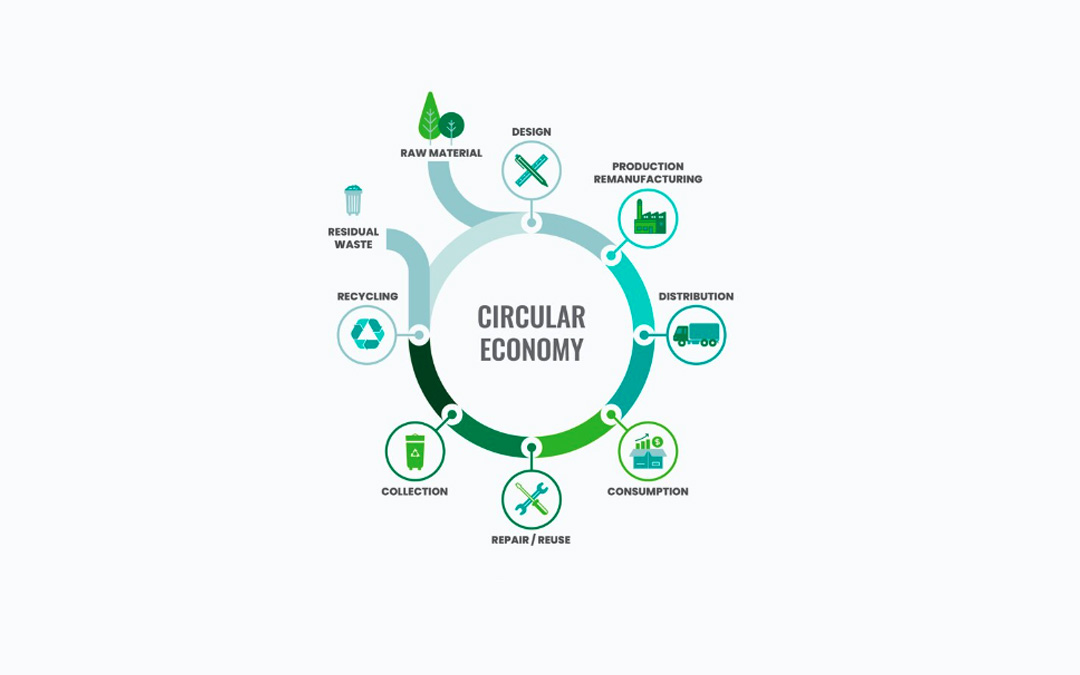Circular economy: what’s it all about?

It is almost 50 years since the phrase ‘Reduce, Reuse, Recycle’ was first popularised in the US.
If people did just two of the three things, they thought they were doing the right thing.
But fast-forward to 2024, and it’s clear that the three Rs just won’t cut it. So much more is required to address the urgent global challenges of climate crisis, biodiversity loss and waste management.
Enter the circular economy, circularity, and the end of the linear ‘take, make, waste’ economy.
A truly circular economy captures materials or services from the time of production (or even before) to the end of life, ensuring that no resources are taken and wasted and regeneration doesn’t harm the environment.
The not-for-profit organisation, the Ellen Macarthur Foundation (EMF), is an international network promoting expertise in the circular economy. The foundation describes the circular economy as:
‘… a system where materials never become waste and nature is regenerated. In a circular economy, products and materials are kept in circulation through processes like maintenance, reuse, refurbishment, remanufacture, recycling, and composting. The circular economy tackles climate change and other global challenges, like biodiversity loss, waste, and pollution, by decoupling economic activity from the consumption of finite resources.’
For a more visual definition, see this video also from the EMF.
Governments have also been actively looking at how populations can benefit from a circular economy. On paper at least, the Federal Government is committed to transitioning to a circular economy by 2030. The Australian state and territory environment ministers met in June 2023 and committed to lead the development of a national framework to do this.
A Circular Economy Ministerial Advisory Group was set up to advise on the opportunities and challenges. The group is chaired by former Victorian Deputy Premier John Thwaites. So far, there is little detail about the group’s priorities, but its membership is listed here.
Businesses are also beginning to understand the value of a circular economy,
knowing that if they don’t act now, they will soon be forced to do so by law and shareholders. An article for the 2024 Circular Economy Summit explains that one of the benefits of the circular economy is ‘maximising cost savings for businesses by reducing their reliance on raw materials and lower production costs.’
Circularity is now part of the legal framework by which local government in Victoria is expected to operate. The Circular Economy Waste Reduction and Recycling Act 2021 contains mandates for kerbside waste collection. For example, every household must have organics and glass recycling by 2030.
One practical way to support circularity is to pledge to buy second-hand if you can. Our wonderful local op shops, garage sales, clothing swaps and markets make this easier. As does the nearby Circonomy company. Based in Reservoir, Circonomy started out as the world’s biggest garage sale and is now operating a larger business and marketplace of second-hand goods and services aimed at individuals and businesses. Check it out.
Another thing we can all do is be well-informed, so that when you chat with someone about buying a new phone or replacing a five-year-old fridge, you can share information about why it’s crucial to rethink our way of life.
The Ellen MacArthur Foundation is a good place to explore educational opportunities about the circular economy. This course is worth exploring on Future Learn.
Another resource is Circular Economy Victoria – which is also working to speed up the transition we need to make. It has some great resources.
Written by Amanda Tattam
